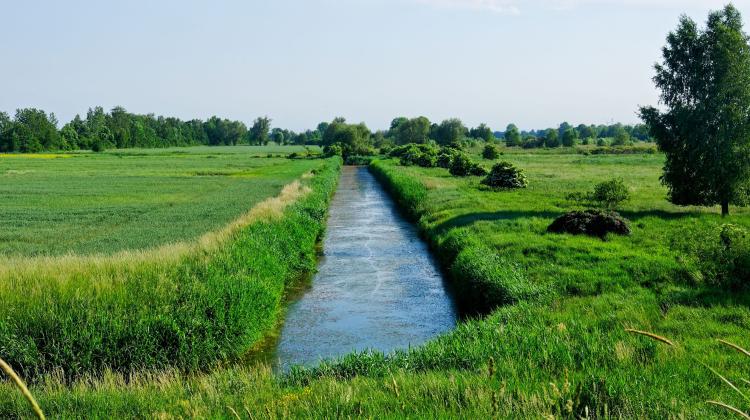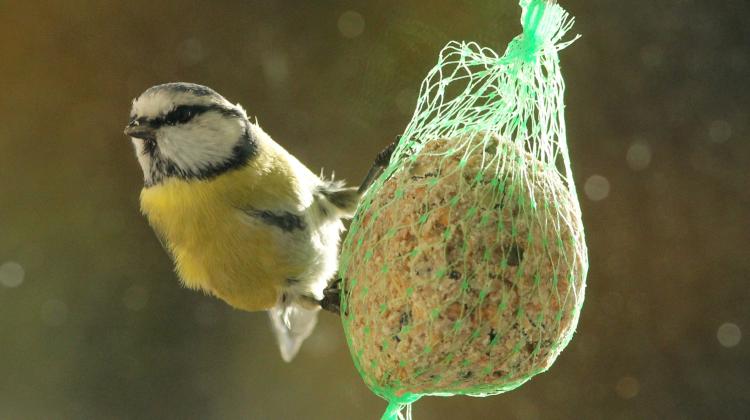Less fertilizer residues in rivers thanks to plants in agricultural ditches
 Credit: Adobe Stock
Credit: Adobe Stock
Vegetation acts as a natural filter for sediments and pollutants, supporting the self-purification of water. A scientist from the Institute of Geophysics of the Polish Academy of Sciences points out that this is of particular importance in agricultural ditches, because plants retain residues of fertilizers and plant protection products.
Conclusions from the research conducted by Dr. Monika Kalinowska, a professor at the Institute of Geophysics of the Polish Academy of Sciences, who models the spread of pollutants in open channels (i.e. rivers, streams, etc.), were published in the journal Hydrology and Earth System Sciences.
The researcher reminds that vegetation commonly present in rivers and canals significantly affects not only the flow of water itself, but also the dispersion of substances dissolved in it, which can include various pollutants.
'Vegetation acts as a natural filter for sediments and pollutants, supporting self-purification of water. This particularly important in agricultural ditches, because vegetation has a beneficial effect on the purification of water from the residues of fertilizers and plant protection products, which flow into ditches from the surrounding fields', Kalinowska emphasises.
Her team of scientists conducted tracer experiments (using a special, environmentally safe red dye) to understand the effect of vegetation on the flow and transport of dissolved substances in two extreme variants: a heavily overgrown channel and a channel cleared of vegetation. The key task was to determine the parameters characterizing the processes of mixing and the dispersion of substances dissolved in water (such as pollutants) and their dependence on vegetation cover.
'Our results confirm that natural vegetation has a large impact on the flow of water and the transport of dissolved substances, and large vegetation cover reduces the so-called longitudinal dispersion coefficient (the most important, and at the same time usually the most difficult to determine parameter used in computer models, controlling the mixing of substances in rivers and canals). In addition, we noticed that the relationship between the tested vegetation cover and the dispersion coefficient was linear', reports Kalinowska.
The researcher emphasises that the results only concern high vegetation cover conditions. 'In the next studies, we plan to supplement them with observations conducted in various flow and vegetation cover conditions', she adds.
According to the scientist, this is innovative research. 'Unlike most of the available studies on the influence of vegetation on flow and mixing, which have so far been carried out mainly in laboratory conditions - usually with artificial elements imitating natural vegetation in selected configurations and conditions, our research concerned vegetation in complex natural conditions, such as we deal with in practice', she emphasises.
According to Kalinowska, understanding the complex mechanism of the influence of vegetation on the flow and mixing of pollutants is important both in the context of scientific research and in the development of computer models for water management strategies, including crisis situations. 'In this way, we will be able to prepare models that will allow us to effectively determine the rate of pollution spreading in rivers, as well as help plan preventive measures and respond appropriately in the event of failures or disasters', she points out.
Kalinowska adds that this type of research may also be helpful when formulating new guidelines for the maintenance of watercourses, including agricultural ditches, taking into account the compromises balancing the needs of flood protection with pro-retention measures and water quality protection.
The scientist reminds that in the past, vegetation in rivers and canals was mainly treated as an 'obstacle' and was often removed to ensure channel flow capacity and meet flood protection needs.
'Extensive removal of vegetation is still widely practiced. However, the principles of sustainable development are increasingly taken into account when deciding on any river and canal engineering projects. In the context of a changing climate, vegetation in watercourses is therefore starting to be perceived not only as something undesirable, but also as a way to increase retention and as a natural trap and filter for sediments and pollutants', concludes Monika Kalinowska. (PAP)
Agnieszka Kliks-Pudlik
akp/ zan/ kap/
tr. RL
Przed dodaniem komentarza prosimy o zapoznanie z Regulaminem forum serwisu Nauka w Polsce.


















